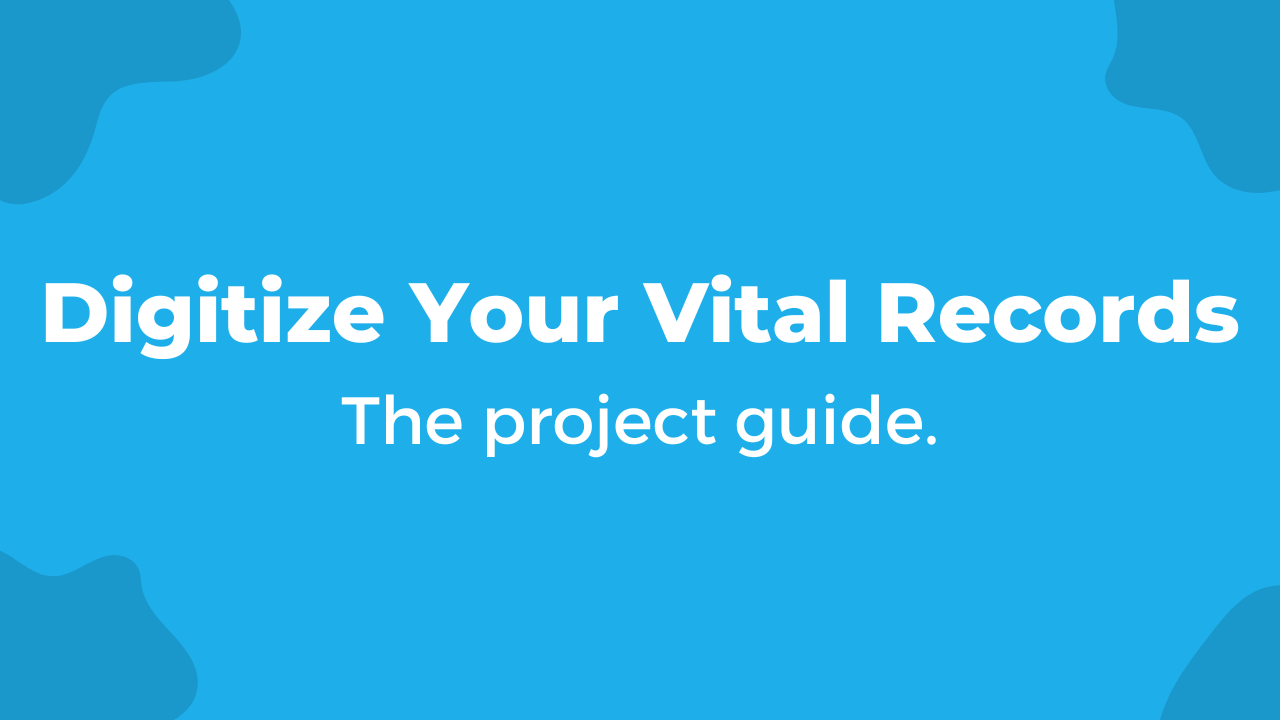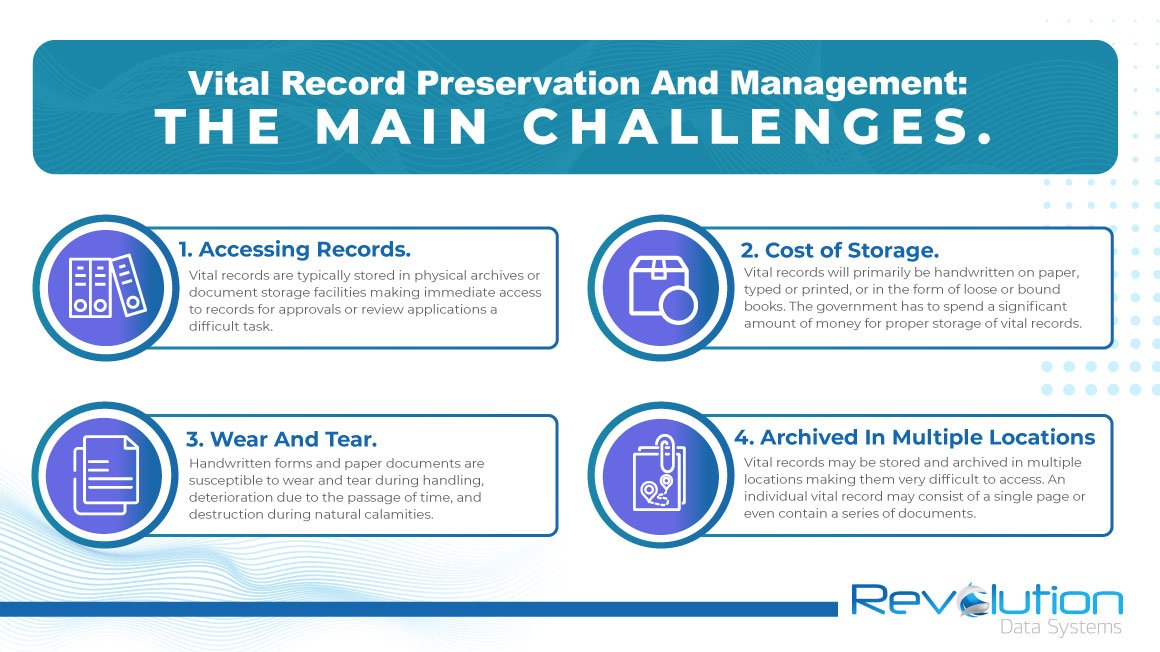Digitize Your Vital Records: The Project Guide
The United States has been preparing and retaining essential documents relating to citizens' life events on paper and handwritten forms level for centuries.
The National Archives specifies, "Vital records most commonly refer to records such as birth and death certificates, marriage records and divorce decrees, wills and the like.”
Vital records offices in respective states perform the critical role of creating, maintaining, and issuing copies of these vital records as and when required by citizens.
Access to vital records is important from both a personal and government perspective. These records are the foundation of research for preparing government policies, financial policies, health care policies, and measuring their success. On the personal front, individuals have to present life events records at various stages of life, and even after an individual's death.
For example, various institutions require original death records or certified copies of the death certificates for executing wills or transferring ownership to the legal heir. Birth records are required for enrolling in school, applying for a passport, and claiming government benefits, insurance benefits or pensions.
Challenges in maintaining and preserving vital records
Many government agencies need to access these vital records for validation or to issue various approvals or review applications. When these records are on paper, this process becomes time-consuming and almost unviable. If an original document is stored in a physical archive or document storage area of a county office, how do officials access it for validation or to issue a copy?
The government has to spend a significant amount of money for proper storage and preservation of these vital records. Yet, even with the utmost care, handwritten forms and paper documents are susceptible to wear and tear during handling, deterioration due to the passage of time, and or destruction during natural calamities. In such cases, it may require massive efforts to restore these vital records.
Local and state government departments face many unique challenges in preserving vital records. Older vital records will primarily be handwritten on paper, typed or printed, or in the form of loose or bound books, or stored on microfilms. An individual vital record may consist of a single page or even contain a series of documents, including certificates, affidavits, licenses, forms, correspondences, or other material. Vital records may even be stored and archived in multiple locations.
But these vital records are indispensable, so they have to be retained as per defined retention policies defined.
Digitize vital records: Start with document scanning
Scanning paper documents is a fundamental step to digitizing vital records and bringing them into a central, public repository which is searchable.
There are several reasons to transform vital records into digital records.
Digital files are easier to search, retrieve, and share. They also save expensive storage space and can affordably be stored and backed up on cloud-based storage and archival solutions. Digitization preserves information as copies are always available in case the original records are lost or damaged. Building and executing a disaster recovery plan is easier when records are stored in digital formats.
Moreover, once digitized, the records can be routed to any existing document management system for ease of management.
Data capture and automated extraction
Just scanning documents into image formats is not enough as computers cannot read the text printed in images. To make them machine-readable, you need to use data capture technology to transform scanned images into computer-readable text.
At Revolution Data Systems, we have years of experience transforming paper or microfilm records into digital formats that can be indexed and classified into a searchable database. We transform vital information locked in paper documents, hand-written, type-written, and other formats into high-quality digital data.
Convert & index handwritten records
Handwriting varies from person to person. Handwritten documents have a significant variation in character shapes or inconsistencies in the form of each alphabet due to differences in handwriting styles. Similarly, cursive fonts in some printed text, for example, fonts used in marriage certificates, title deeds or handwritten wills, pose a challenge for automatic conversion to machine-readable text. Traditional OCR extracts data from scanned images and printed text. But it often does not produce accurate results for handwritten documents and requires human intervention.
If traditional OCR cannot accurately convert legacy handwritten or historical printed documents with non-standard fonts, we risk losing irreplaceable vital records. Sometimes an entire document is handwritten; at other times, a printed record may contain important handwritten annotations, which must also be converted. Failure to recognize and capture handwritten information creates hurdles to digital transformation.
RDS provides data entry and indexing services to overcome this challenge in converting handwritten records. Our experts will review and correct the characters that are not accurately recognized by OCR and manually extract handwriting to computer-typed text.
Our services for digitizing and indexing handwritten documents help government agencies and other institutions to achieve their digital transformation goals.
Revolution Data Systems: Your partner for vital records digitization
Revolution Data Systems offers cost-effective, end-to-end digital transformation solutions, starting from scanning and document indexing to process automation for increasing the speed and efficiency of operations in government offices.
Our document scanning services, microfilm scanning, document management and business process management services help government offices digitize vital records and manage them efficiently. Our highly skilled and certified personnel provide consultancy for the entire project to digitize vital records to your specific requirements.
We apply strict security measures and protocols for tracking, securing and monitoring vital records during the conversion project to protect the documents and the information they contain. We have stringent quality measures to ensure high-quality digital output.
We have successfully executed large-scale scanning projects for various US government departments on time and within budget.
Contact RDS today for a custom quote to digitize vital records and automate the processing and management of essential documents.



